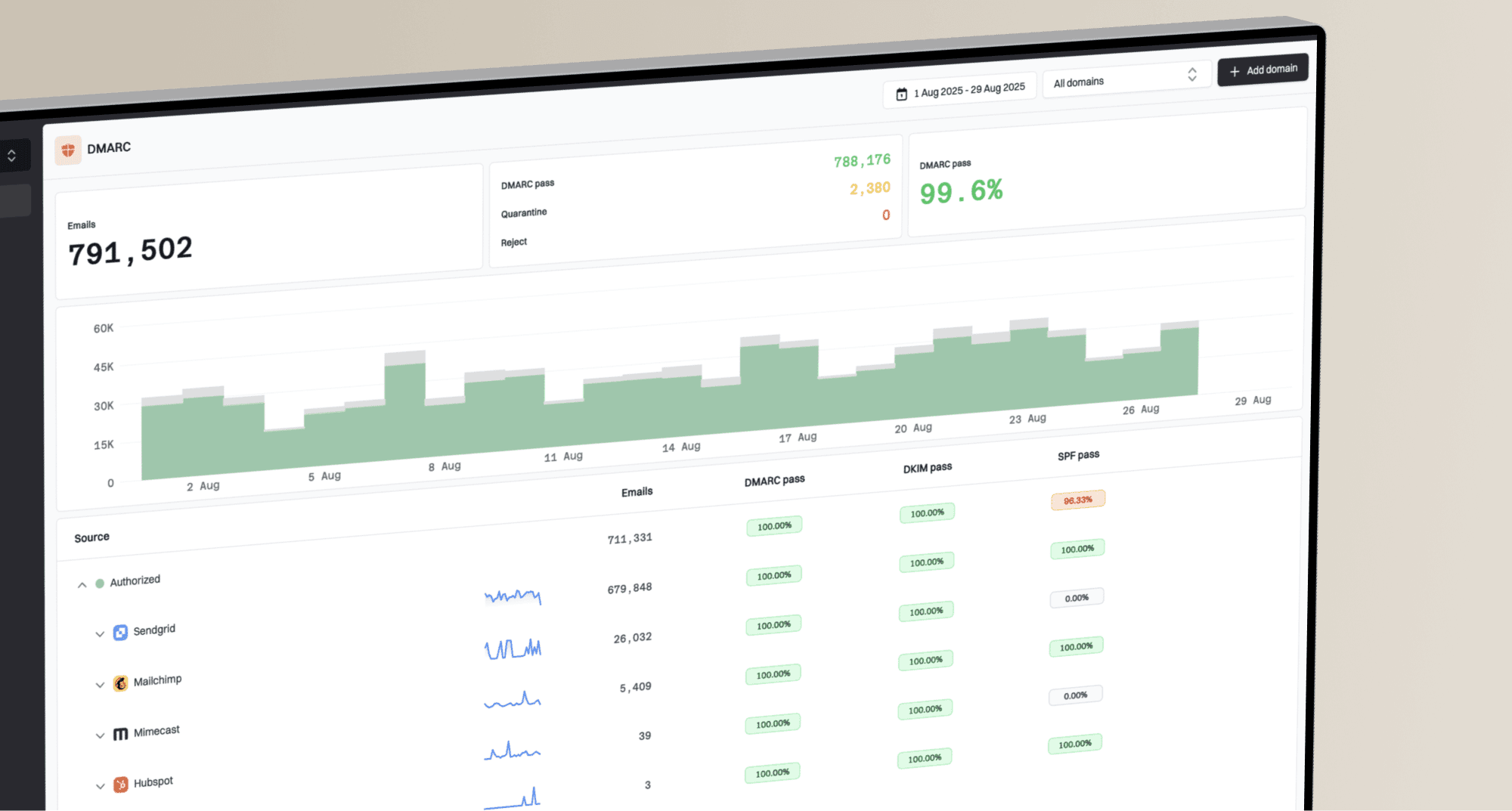How to get dedicated IP address details from SparkPost and troubleshoot IP reputation issues?

Michael Ko
Co-founder & CEO, Suped
Published 7 Jul 2025
Updated 5 Nov 2025
7 min read

 SparkPost through an integration platform, can sometimes be challenging.
SparkPost through an integration platform, can sometimes be challenging. SparkPost and outlines effective strategies for troubleshooting common IP reputation issues.
SparkPost and outlines effective strategies for troubleshooting common IP reputation issues. SparkPost customer, you generally have access to detailed reporting within their platform. Their Email Analytics platform is designed to provide visibility into sending IPs, associated domains, and key metrics like complaints and bounces. This level of detail is crucial for diagnosing issues specific to your dedicated IP addresses. Always check the SparkPost deliverability documentation for the most up-to-date methods of accessing this information.
SparkPost customer, you generally have access to detailed reporting within their platform. Their Email Analytics platform is designed to provide visibility into sending IPs, associated domains, and key metrics like complaints and bounces. This level of detail is crucial for diagnosing issues specific to your dedicated IP addresses. Always check the SparkPost deliverability documentation for the most up-to-date methods of accessing this information. Iterable (or similar), which then routes emails through
Iterable (or similar), which then routes emails through  SparkPost, the level of detail available to you might be abstracted or limited by the intermediary platform. In such cases, the integration might not expose all of
SparkPost, the level of detail available to you might be abstracted or limited by the intermediary platform. In such cases, the integration might not expose all of  SparkPost's native reporting features, especially those segmented by IP address. Your first step should be to consult the documentation of your integration platform to see what
SparkPost's native reporting features, especially those segmented by IP address. Your first step should be to consult the documentation of your integration platform to see what  Iterable (or your specific platform) provides.
Iterable (or your specific platform) provides. Iterable (or your integration) doesn't offer the specific IP-level complaint and bounce details you need, you might need to reach out to
Iterable (or your integration) doesn't offer the specific IP-level complaint and bounce details you need, you might need to reach out to  SparkPost's support directly. They may be able to provide custom reports or guide you to an API endpoint that offers the data you're seeking. This is particularly important for understanding the distribution of campaigns across multiple dedicated IP addresses, which can be critical for maintaining dedicated IP reputation with ISPs.
SparkPost's support directly. They may be able to provide custom reports or guide you to an API endpoint that offers the data you're seeking. This is particularly important for understanding the distribution of campaigns across multiple dedicated IP addresses, which can be critical for maintaining dedicated IP reputation with ISPs. SparkPost dashboard and explore the Email Analytics or Deliverability sections. Look for reports that can be filtered or segmented by sending IP.
SparkPost dashboard and explore the Email Analytics or Deliverability sections. Look for reports that can be filtered or segmented by sending IP. SparkPost support to inquire about IP-specific reporting.
SparkPost support to inquire about IP-specific reporting. SparkPost's API documentation. Many ESPs offer API endpoints to pull raw or aggregated data, which can then be processed to extract IP-specific metrics.
SparkPost's API documentation. Many ESPs offer API endpoints to pull raw or aggregated data, which can then be processed to extract IP-specific metrics. Validity's Sender Score is one metric, it's essential to understand that it doesn't always directly correlate with inbox placement across all mailbox providers. Different providers weigh various factors, and some may not consider Sender Score at all. This means you need a holistic approach to troubleshooting. If you're seeing B2B email quarantine issues with new dedicated IPs, this approach is especially important.
Validity's Sender Score is one metric, it's essential to understand that it doesn't always directly correlate with inbox placement across all mailbox providers. Different providers weigh various factors, and some may not consider Sender Score at all. This means you need a holistic approach to troubleshooting. If you're seeing B2B email quarantine issues with new dedicated IPs, this approach is especially important. GooglePostmaster Tools provides IP reputation data specifically for
GooglePostmaster Tools provides IP reputation data specifically for  Gmail addresses. Check the IP reputation dashboard there. Another valuable resource is
Gmail addresses. Check the IP reputation dashboard there. Another valuable resource is  Talos Intelligencewhich offers a volume history for any given IP. This can help you determine if the IP is being used by other entities or experiencing unusual sending patterns not originating from your campaigns. This can shed light on whether you're using a shared IP despite having dedicated IPs.
Talos Intelligencewhich offers a volume history for any given IP. This can help you determine if the IP is being used by other entities or experiencing unusual sending patterns not originating from your campaigns. This can shed light on whether you're using a shared IP despite having dedicated IPs. Sender Score (Validity): Provides a score from 0-100 based on various metrics. A drop can indicate reputation issues but isn't always indicative of deliverability problems.
Sender Score (Validity): Provides a score from 0-100 based on various metrics. A drop can indicate reputation issues but isn't always indicative of deliverability problems. Google Postmaster Tools: Offers specific data on
Google Postmaster Tools: Offers specific data on  Gmail deliverability, including IP reputation, spam rate, and authentication errors.
Gmail deliverability, including IP reputation, spam rate, and authentication errors. Talos Intelligence (Cisco): Provides comprehensive reputation data for IPs, including volume history, which can help detect anomalies or shared usage patterns. This is helpful for understanding your email domain reputation.
Talos Intelligence (Cisco): Provides comprehensive reputation data for IPs, including volume history, which can help detect anomalies or shared usage patterns. This is helpful for understanding your email domain reputation. Complaints by IP: Identify if specific IPs are generating higher complaint rates, indicating issues with list quality or content.
Complaints by IP: Identify if specific IPs are generating higher complaint rates, indicating issues with list quality or content. Bounces by IP: Track bounce rates per IP to spot problematic IPs or list segments. High bounce rates can also lead to an IP being added to a blocklist (or blacklist), as explained in what happens when your IP gets blocklisted.
Bounces by IP: Track bounce rates per IP to spot problematic IPs or list segments. High bounce rates can also lead to an IP being added to a blocklist (or blacklist), as explained in what happens when your IP gets blocklisted. Campaign distribution reports: If you have multiple dedicated IPs, verify that campaigns are distributed as intended to avoid overburdening a single IP.
Campaign distribution reports: If you have multiple dedicated IPs, verify that campaigns are distributed as intended to avoid overburdening a single IP. SparkPost dedicated IPs are the only ones sending mail on behalf of your domain. If you see other IPs listed in the reports that you don't recognize, it could indicate unauthorized sending or misconfigurations that need to be addressed immediately. This visibility is key to confirming that your dedicated IPs are indeed dedicated to your sending.
SparkPost dedicated IPs are the only ones sending mail on behalf of your domain. If you see other IPs listed in the reports that you don't recognize, it could indicate unauthorized sending or misconfigurations that need to be addressed immediately. This visibility is key to confirming that your dedicated IPs are indeed dedicated to your sending.